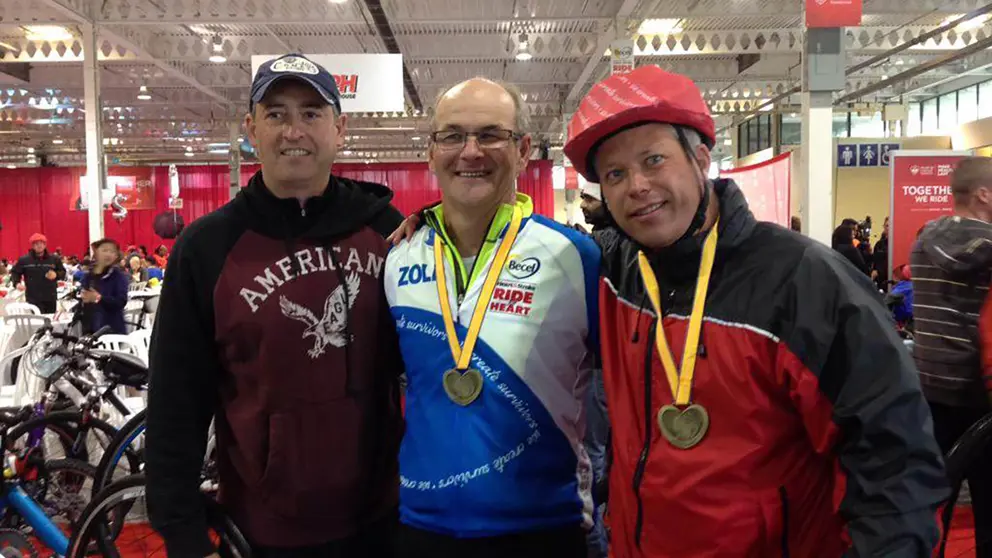“Do you know CPR?” The woman dashing out of the cycling gym called to Shawn Beaulne, who was walking by. “Someone in there has collapsed.”
Shawn, a special constable with the Brantford Police Service, was at the community centre in Ancaster, Ont., to watch his daughter’s hockey game. He was stretching his legs before the puck dropped.
“I’ll give it a try,” he said. Shawn’s job requires him to regularly renew his CPR (cardiopulmonary resuscitation) certification. He had performed CPR in a crisis before, on his brother Chris in 2009.
Rushing into the gym, he saw John Marechal wedged between the wall and a stationary bicycle. He was convulsing and gasping then stopped breathing.
“Buddy, you’re not going to die on my watch,” Shawn told the unconscious man. He suspected cardiac arrest — the man’s heart had stopped beating and blood had stopped flowing throughout the body too.
Someone had already grabbed the gym’s AED (automated external defibrillator).
Buddy, you’re not going to die on my watch.
Each year in Canada, an estimated 60,000 cardiac arrests occur outside of a hospital, but doing CPR and using an AED immediately can double the chance of survival.
An AED is a safe, smart and easy-to-use portable device. It will only deliver an electric shock to the person if it’s needed to restart their heart.
Restarting a heart
Following the instructions on the device, Shawn pulled the straps off the paddles, and placed them on John’s chest. The AED measured his heart’s rhythms, then its display told Shawn to commence CPR. The device gave John’s heart a shock.
CPR and AEDs work hand-in-hand: chest compression keeps blood flowing to the heart, brain and other organs. The AED monitors the heart and when it detects a rhythm, uses an electric shock to get it pumping again.
“Go deeper,” the machine alerted Shawn. He compressed even harder.
When an onlooker said he might break the man’s ribs, Shawn said, “At this point, it doesn’t matter.”
When someone’s heart has stopped, you can’t hurt them by doing chest compressions — you can only help.
After the machine gave a second shock, paramedics arrived and took over. John was whisked to hospital, where he underwent surgery.
Shawn had long understood the importance of AEDs. When his 37-year-old brother suffered cardiac arrest in a cabin in the bush, it took two hours to get him to healthcare professionals. By that time — thanks to the two hours of CPR Shawn performed — the paramedic’s AED detected faint heart activity. Unfortunately Shawn’s brother died soon after.
More AEDs mean more lives saved
Shawn has contemplated getting his own AED and leaving it in his car. He admits that’s extreme. But his cousin runs a gym in Brantford and didn’t have one. “Are you nuts?” Shawn asked the small business owner. He got one.
Thanks to rapid treatment with both CPR and an AED, John Marechal recovered. He’s healthy and has become an avid cyclist. In fact, the two strangers are now good friends and rode together in the Manulife Heart & Stroke Ride for Heart.
“We had a fantastic time,” recalls Shawn. “It was very emotional. It’s so great to see John doing what he’s doing now.”
Heart & Stroke continues to work with governments and other partners to increase the number of AEDs in public places across Canada.

